Clean energy use and reduction of carbon dioxide emissions are the common consciousness of all countries in the world. Among them, the introduction of renewable energy storage systems and the promotion of electric vehicles are the unanimous implementation of governments and enterprises around the world. The most critical strategic component is the lithium ion battery. Whoever has a higher energy density, lower cost, and higher safety lithium battery will control the development trend of this wave of safer lithium battery technology.
All-solid-state batteries are a goal that everyone is striving to pursue. However, the stable and large scale production of solid-state electrolyte materials and all-solid-state batteries has many bottlenecks to be broken in the current manufacturing process, which reduces the production cost of batteries and increases the yield rate.
Through the joint development of NAEPE (Networked-Amide Epoxy Polymer Electrolyte for Solid state batteries, Industrial Technology Research Institute of Taiwan (ITRI) and Amita Technologies Inc. (Amita) have won the 2020 R&D 100 Technology Award.
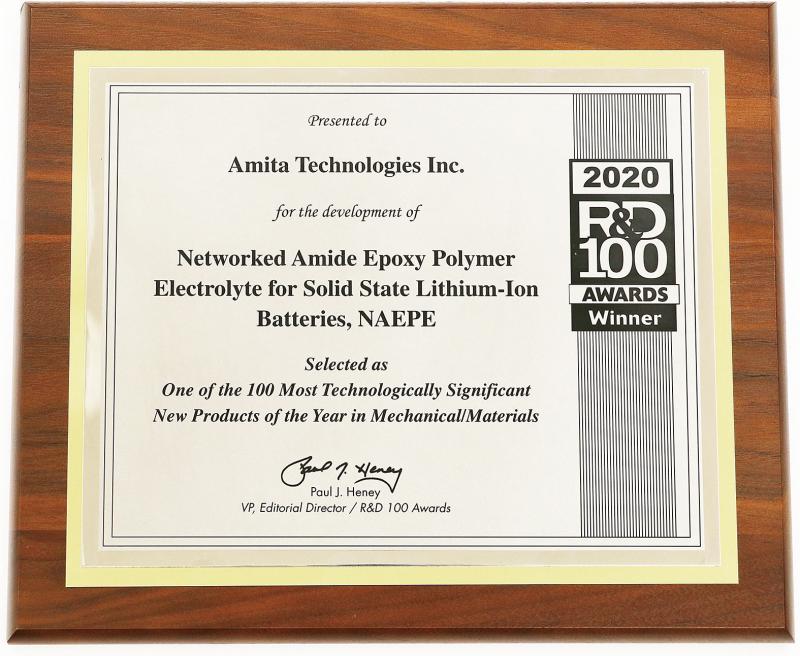
With the introduction of NAEPE electrolyte, the design of the battery cell structure of Amita’s future lithium batteries is based on higher safety, higher conductivity, and higher stable and reliability. The inside battery resistance and the risk of battery failure to be flammable will be greatly reduced.
In addition, NAEPE provides unique advantages to support for lower cost, longer cycle life and achievable development in fast charge batteries.
NAEPE’s self-protection also allows the battery to maintain the original characteristics of rapid charge and discharge, and has significant improvements in resistance to overcharge voltage and even working in high temperature environment. The designed batteries can be quickly charged to 80% capacity in 15 minutes.
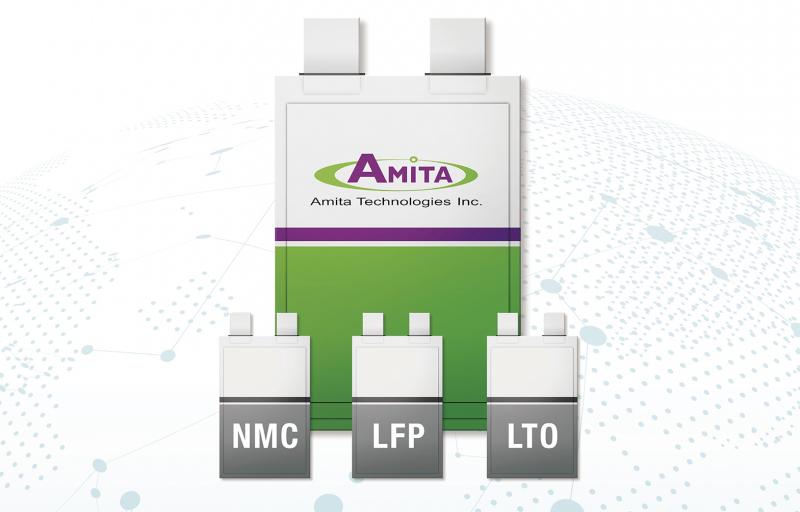
Most important, unlike other solid state electrolytes developed by the famous R&D battery players, NAEPE at the first phase as a quasi-solid state electrolyte can be easily introduced into the existing battery production process by fast implementation of adding up a few equipment in Amita’s 1GWh battery plant in Thailand likely next year. (Advertorial)
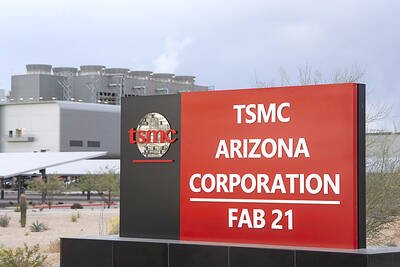
Taiwan Semiconductor Manufacturing Co (TSMC, 台積電), the world’s biggest contract chipmaker, booked its first-ever profit from its Arizona subsidiary in the first half of this year, four years after operations began, a company financial statement showed. Wholly owned by TSMC, the Arizona unit contributed NT$4.52 billion (US$150.1 million) in net profit, compared with a loss of NT$4.34 billion a year earlier, the statement showed. The company attributed the turnaround to strong market demand and high factory utilization. The Arizona unit counts Apple Inc, Nvidia Corp and Advanced Micro Devices Inc among its major customers. The firm’s first fab in Arizona began high-volume production
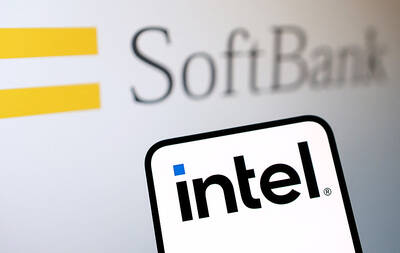
VOTE OF CONFIDENCE: The Japanese company is adding Intel to an investment portfolio that includes artificial intelligence linchpins Nvidia Corp and TSMC Softbank Group Corp agreed to buy US$2 billion of Intel Corp stock, a surprise deal to shore up a struggling US name while boosting its own chip ambitions. The Japanese company, which is adding Intel to an investment portfolio that includes artificial intelligence (AI) linchpins Nvidia Corp and Taiwan Semiconductor Manufacturing Co (TSMC, 台積電), is to pay US$23 a share — a small discount to Intel’s last close. Shares of the US chipmaker, which would issue new stock to Softbank, surged more than 5 percent in after-hours trading. Softbank’s stock fell as much as 5.4 percent on Tuesday in Tokyo, its

The prices of gasoline and diesel at domestic fuel stations are to rise NT$0.1 and NT$0.4 per liter this week respectively, after international crude oil prices rose last week, CPC Corp, Taiwan (台灣中油) and Formosa Petrochemical Corp (台塑石化) announced yesterday. Effective today, gasoline prices at CPC and Formosa stations are to rise to NT$27.3, NT$28.8 and NT$30.8 per liter for 92, 95 and 98-octane unleaded gasoline respectively, the companies said in separate statements. The price of premium diesel is to rise to NT$26.2 per liter at CPC stations and NT$26 at Formosa pumps, they said. The announcements came after international crude oil prices
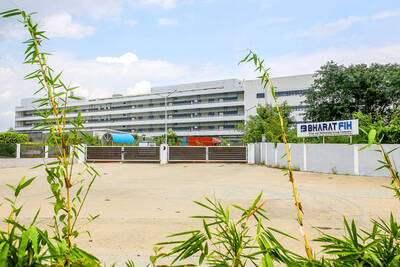
SETBACK: Apple’s India iPhone push has been disrupted after Foxconn recalled hundreds of Chinese engineers, amid Beijing’s attempts to curb tech transfers Apple Inc assembly partner Hon Hai Precision Industry Co (鴻海精密), also known internationally as Foxconn Technology Group (富士康科技集團), has recalled about 300 Chinese engineers from a factory in India, the latest setback for the iPhone maker’s push to rapidly expand in the country. The extraction of Chinese workers from the factory of Yuzhan Technology (India) Private Ltd, a Hon Hai component unit, in southern Tamil Nadu state, is the second such move in a few months. The company has started flying in Taiwanese engineers to replace staff leaving, people familiar with the matter said, asking not to be named, as the